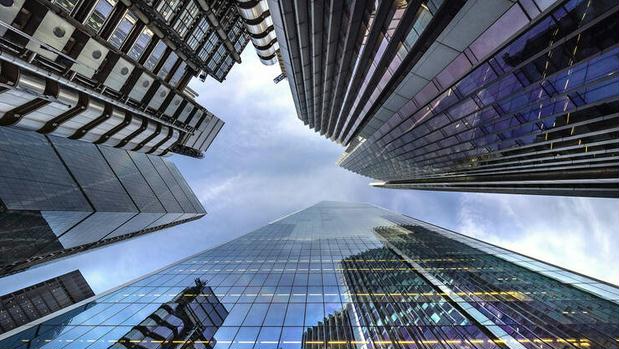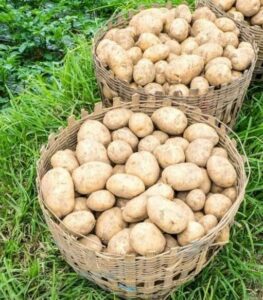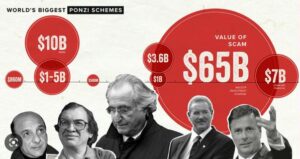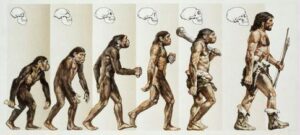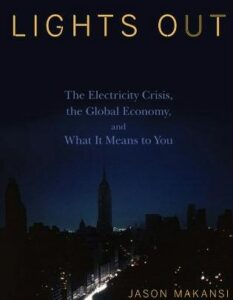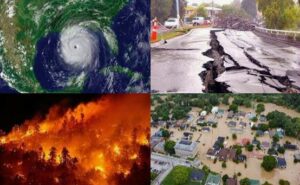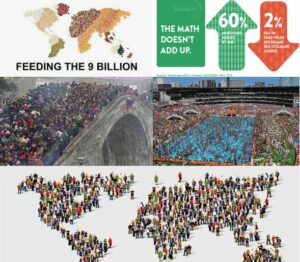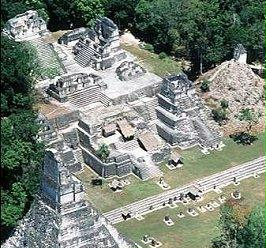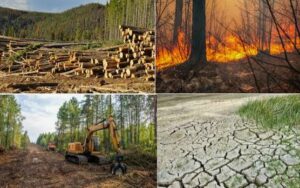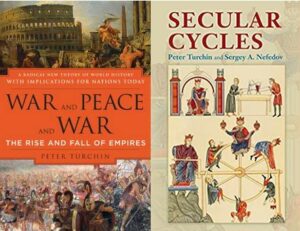
Preface. This is a book review of both “Secular Cycles” and “War & Peace & War”. I recommend reading “War & Peace & War” first, then the more difficult “Secular Cycles”.
Turchin has found patterns in the rise and fall of many nations. Although there are variations in outcomes given the geography and culture of a nation, on average a nation’s cycle occurs over centuries with stages of expansion and integration followed by stagnation, crisis, conflict-ridden depression, ending in collapse. He has a book on modern society and collapse that utterly misses our fossil-fueled civilization, but still the factors he writes about will also play a role as energy declines and climate changed + lack of fossil pesticides and fertilizers reduce crop production. There is a list of 210 reasons why the Roman empire failed, which I try to cover at this website which ultimately is about the collapse of our one-time fossil-fueled richest-most-complex society that has ever or will ever exist.
Homer-Dixon has come to similar conclusions, and his key findings also discuss the role of resources and violence better than Turchin does.
Alice Friedemann www.energyskeptic.com Author of Life After Fossil Fuels: A Reality Check on Alternative Energy; When Trucks Stop Running: Energy and the Future of Transportation”, Barriers to Making Algal Biofuels, & “Crunch! Whole Grain Artisan Chips and Crackers”. Women in ecology Podcasts: WGBH, Jore, Planet: Critical, Crazy Town, Collapse Chronicles, Derrick Jensen, Practical Prepping, Kunstler 253 &278, Peak Prosperity, Index of best energyskeptic posts
***
When the crisis phase and state failure happens, it can occur quickly — within 20 years.
History will never be a precise as physics
Turchin assures the reader he doesn’t expect the use of scientific methodology and data will ever make history as clear as physics, but it enables him to back up his theories with strong evidence.
It can’t be physics because social systems are too complex, single individuals can affect the whole system, outside armies invade, there’s climate change, epidemics, earthquakes, volcanic eruptions, and the chaos of interactions between of fathers-and-sons cycles plus all of the above factors and trends. That makes it hard to predict what will happen very far into the future.
The Crisis phase / State Breakdown
Although Turchin’s theory is meant for agrarian societies, I think it’s clear where industrial civilization is within the cycle. Sure, an industrial civilization is bound to collapse differently than an agrarian one given the many unique factors of our one-time only fossil fueled society.
At the start of the crisis phase, when the state collapses, the elites have very high levels of corruption. Sounds like our times too, huh.
Having read a great deal about this topic in general (see my amazon book list Fraud & Greed: Wall Street, Banks, & Insurance book list), it seems pretty clear that we are on the verge of a crisis phase. The wealthy are trying to blame the government (like they always have), make billions off of defense, Medicare, and other government contracts, have gotten their taxes dramatically lowered, and the distribution of wealth has never been more unfair in our nation’s history. When you read the details of other past nations in these books, you can see that the same tactics were used in previous secular cycles.
Short summary of a typical cycle:
- There is growth in the beginning. Everyone lives well. There’s land and food for all, no need to work for someone else if you don’t want to, and if you do, the wages will be high because workers are scarce. There’s not a great deal of stratification of wealth yet consequently.
- But that ends as available land is farmed, and there’s not enough to pass on to all of the children. Peasants either need to find work on someone else’s land, or go to towns and cities, where they’ll also earn low wages as more and more people do so as well. Since cities are breeding grounds for disease, the death rate is high so for a while there is room for newcomers to continue to find work
- The disparity in wealth grows. Wages go down and yet at the same time the wealthy can charge more in rent for land and homes as population grows. Worse yet, food prices rise as more people compete for the limited food that can be grown in an agrarian society.
- It’s not long before the poorest peasants become malnourished and vulnerable to disease. The elites and wealthier peasants can store enough grain to get past one bad season, but if there is a second bad harvest year, the numbers of workers dying grows.
- As carrying capacity is exceeded even further, stagflation sets in. The wealthy elites have been able to afford to have many children, too many for them all to continue the lavish lifestyles of their parents. Elite families become poor, or wage war against other elite families to maintain their wealth.
- This is destabilizing to society.
- By the end of the stagflation cycle, wealth is concentrated in the elites, and even among them there are the very richest who have even more power and wealth. In an agrarian society, where there were such small middle classes, the elites oven only number one to two percent of the population but have most of the wealth and power.
- The state’s ability to maintain order is threatened. Armies and bureaucracies are expanded, but this costs so much money that taxes are raised, which makes both the peasants and nobility angry and leads to elite-driven popular uprisings.
- A depression ensues, full of conflict.
- This socio-political instability leads to more peasant deaths, so less food can be grown, which increases malnourishment, which leads to epidemics. Meanwhile, the elites are fighting and reducing their own numbers as well. This all leads to the state collapsing into bankruptcy and disorder, crisis, depression, and eventually the start of a new cycle.
The main factors of Turchin’s theory
- Carrying capacity overshooting the productive capacity of the land, overpopulation plays a key role in the rise and fall of civilizations
- The stagflation that occurs when the elites get rich as overpopulation provides them with both cheap labor and the ability to charge lots of rent
- Strength of state institutions
- The role of socio-political instability.
How this unfolds and how long the phases last depend on many other factors. If there’s a frontier with more land, or nations to be conquered next door, the nation can continue to expand. During a crisis though, outside nations may take advantage of the state’s weakness and invade, quickly bringing on collapse.
At the bottom of the cycle, the best farm land is abandoned
Turchin mentions that the best farm land is abandoned, such as the bottom land of valleys with the richest soil. This happens because starvation and disease drive people away from cities and towns out into the countryside looking for food. Farmers have to contend with that, plus gangs trying to force them into slave labor, and local and external armies fighting and pillaging. So they flee and the land lies fallow. Food is mainly grown during these unstable times near towns and fortified areas where lookouts can spot attacking brigands and sound the alarm.
If you’re ever unlucky enough to be alive during a crisis phase, you’d want to live in a town large enough to defend nearby farms, but not so large the population has gone past carrying capacity. Isolated farms are vulnerable to invasion and plunder.
Disintegrative Trends: The Crisis and Depression phases
- It can take several iterations for an empire to completely fail.
- Within the disintegration, there are also “fathers-and-sons” cycles war and peace and war. These civil wars consume a nation until the survivors and their children are so tired of war that peace and stability finally return. But the grandchildren who never experienced the reality of war start new wars. This cycle tends to happen every 40 to 60 years.
- Climate change has the least effect when there’s a low population and lots of land, and the most effect if a society is in the disintegrative phases.
Competition between groups
One way of looking at history is competition between different groups, with those who have the highest level of cooperation having an advantage over other groups. Ethnicity and religion are very important to creating in and out groups as well as cohesion. Other groups might be divided by language or dialect. Differences can also be what race you are, what rituals you engage in, or your appearance: clothing, tattoos, hairstyle, etc.
Imperial nations have high levels of cohesion, especially at the edges of the empire where conflicts are greatest.
Secular Cycles take place over two to three hundred years. Within the same nation, different regions can be in different phases.
A more detailed list of the phases derived from the table at the end of Chapter 1 in Secular Cycles:
Expansion Phase (growth)
- Stability and peace leads to prosperity
- Grain reserves are high, so crop failures don’t have much effect
- Wages are high, commoners can rent farmland cheaply
- Cities are small, artisans few, trade level low,
- Prosperity leads to population growth
- The elites exist but there aren’t many and they have a pretty modest lifestyle because there are peasant wages are so high.
- The number of towns and land farmed grows
- The elites don’t own large amounts of land yet
- The state government is well financed from increasing taxes and ideas about going to war are growing
- The overall outlook is one of optimism
Stagflation phase (compression)
- Population growth continues, but the rate slows down, yet still overpopulation is reached, just as Malthus predicted, and the carrying capacity – the number of people who can occupy the land – is exceeded.
- This problem is “solved” by the excess children without land moving to towns and cities.
- Cities are cesspools of disease and many die, but no problem, there are always excess children from farms to replace them
- Towns and cities grow, craftsmen and trade flourish
- The Elites — the top one to two percent of the population — enter a golden age because they can charge high rents for all of the basic necessities: food, housing, land, etc., and at the same time, pay low wages. No wonder the wealthy elites in America are so pro-immigration and against birth control and abortion. In every civilizations that has ever existed, without exception, the elites only grow fabulously wealthy at this point in the cycle when they can pay low wages and charge high rents.
- The amount of land owned by the wealthy is increasing
- Some segments of the elite consume conspicuously.
- Meanwhile the commoners in towns, cities, and on farms are all experiencing decreasing wages and increasing costs of living. Land prices are high. Misery, the homeless, debt, and poverty are increasing. Grain reserves are declining.
- The rich and powerful over-reproduce too, so there are fewer lucrative opportunities for their children
- The rich start to compete with each other. How this happens varies. In some there might be more duels, or more lawsuits. If there are government jobs that are especially lucrative, the competition to get into the best schools and to get the best government jobs grows intense.
- The elites also try to get the government to give them money, to stop taxing them at all or lower their taxes
- Which results in the peasants being taxed even more to make up for the lowered taxes on the rich
- The government and internal order is till okay but starting to unravel, the general outlook grows more pessimistic and critical.
- The government may try to solve these problems by invading nearby countries, or provide more food by building irrigation and roads
- There is often a rise in the rate of crime in this pre-crisis period
Crisis Phase (state breakdown)
- Trade starts to decline due to political unrest
- Cities are at their highest levels of population
- A few large landowners own most of the land. Sounds like now: In America (2013), the top 10 landholders own 2% of the land. In California (1973), just 25 landowners hold 16% of the land.
- Debt is high, the price of food is high, and the grain reserves are gone
- Very high inequality between the rich and poor, subsistence crises increase as food shortages happen more often
- The populace, weakened by malnutrition and hunger, easily succumbs to epidemics (i.e. anti-biotic resistant diseases in the future like TB, etc).
- In the country and city, peasants rebel, demand reforms such as land redistribution
- The elites have very high levels of corruption.
- The elites may begin to wage wars against each other
- The population starts to decline
- The government goes bankrupt since no one is paying taxes, and loses control of the army and other institutions
- The government collapses
Depression
- At the bottom the population is low, there’s lots of free land or cheap land, grain and other food vary in availability and price
- The depression goes on for a long time because social cohesion has been lost and isn’t easily regained, fighting continues, and this is often when outside conquerors invade and conquer
- The rich have gotten their comeuppance and declined from civil wars between themselves and are consuming a lot less, own less land than before, lots of downward mobility with the elite becoming commoners again
- The state keeps trying to reinstate order but usually fails, and this is often when nearby nations invade to take advantage of the collapse
- Trade is local, long-distance networks are broken
- The outlook is very pessimistic
- After enough time, stability and peace come back and the cycle starts all over again.
Farmers and nomads hate each other and always will: Russia vs the Tatars.
Since the beginning of agriculture, nomads have seen farmers as cowards doing women’s work, and stole their grain and captured farmers to turn them into slaves. For example, in 1521 the Crimean Khan Mohammad-Girey invaded Russia with 100,000 men and captured 300,000 people and killed another half a million at a time when there were 7 million people in Russia. And of course, farmers thought the nomads were uncivilized murderers.
Tatar warriors – perhaps 80,000 of them plus 200,000 horses — typically penetrated a settled area up to 240 miles, spread out up to 36 miles, turned around and systematically swept through taking back any booty, animals, and people they could capture. Resistors were killed.
Russian peasants learned to create fortified defense lines of small military towns, and trees were cut to create obstacles. Each was felled so it landed to the south, and their fallen branches were intertwined so the horsemen couldn’t penetrate them. While the invaders spent hours untangling them, the defense forces got ready. The trees also made it harder for the Tatar retreat with all the loot, cattle and captives, giving pursuers enough time often to rescue them. Grasslands were also burned so the Tatar horses had nothing to eat. Beyond this first line of trees was an even more massive defensive line that stretched over 600 miles built by tens of thousands of people.
Peasants in Russia kept settling beyond the defense lines. They all demanded their defense, and boundaries kept growing outwards. Mongols crushed Russians when no collective defense emerged, eventually an “us vs them” glued by Christianity led to collective action, the willingness to endure hardship and do the right thing became deeply ingrained.
Other motivations were getting to loot, or being paid in cash, grain, or land for fighting, and punishment for not fighting. It also helped that at the frontier edge, an egalitarian way of life was common, there weren’t large differences in wealth. Cooperation is not all “sweetness and light” – there has to be policing and punishment. (pp 41-45).
The dividing line between the Russians and Tatars was religion, not ethnicity. About 17% of 17th century Muscovite gentry were Tatars – but they were Orthodox Christians not Muslims, so they were accepted. (p 54)
Miscellaneous notes
Tribes in Europe and Middle East often had separate “chiefs” for military, religion, and the economy. To take on a neighboring empire, someone had to assume all 3 roles to unify tribes in the region. This happened various ways, i.e. in Germany, the cult of Odin gave military chiefs religious legitimacy, in Arabia, religious leaders gained military power (p. 96).
Aristocracies broke into factions, which led to civil war and armies plundering cities, then plague killed a third of the people – only nomads escaped. When people are exposed to years, decades, of chaos, they yearn for stability. Any message of hope, even if only a better afterlife, is attractive. Monotheistic religions satisfy that need, which is why Muslims were able to unify tribes in Arabia. Mohammed was one of over 6 monotheistic prophets. The sudden appearance of prophets in bad times happened when people were ripe for their appearance. Polytheism can’t unite people, because accepting the Gods of the “lucky” tribe isn’t something freedom loving tribespeople want. One of the functions of religion is “us versus them”. Converting to Islam meant submitting to God, rather than a particular leader. Islam welcomes all, regardless of social status or tribal origin. (pp 97-99)
Machiavelli taught rulers to be feared more than loved, and that people were motivated solely by desire for gain and fear of punishment. His ideas were at odds with the prevailing wisdom. P 108-109
Adam Smith was the founder of the “greed is good” philosophy that every one of us is pursuing our own interest and that will eventually be good for society too. And there are many other “rational choice” types of ideas out there, Turchin thinks that cooperation can’t be brought about by force, and no one would pay taxes, there’d be a war of all against all if these ideas were correct. He points to evolutionary biology and kin selection, which favors reciprocal altruism.(111-113).
He cites several studies that point to trust and moral punishment being hard-wired in our brains. The capacity for cooperation exists, Machiavelli was wrong. The good guys pressure the “knaves” and “free-riders” to cooperate, like in WW I women put white feathers on men who hadn’t joined the military yet. (120)
Group Selection. Not many examples in non-humans. We are different because of thought, communication, culture. Cultures with harmful practices are weeded out in group competition – warfare may be one of the most important forces of group selection (p. 127).
Spartan men trained to fight from age 7 onwards away from home. They enslaved the Messenians to grow food and do other chores so they could dedicate themselves to fighting. But the Messenians kept revolting and finally succeeded when Sparta faltered. Rome on the other hand, welcomed those they conquered (164-5).
France and England medieval times: the top 20% owned most everything and benefitted the most from overpopulation: grain prices were high, labor cheap, land rental prices high, manufactured goods cheap since labor was paid so little. The rich spent money on imported luxuries, more churches, etc. (216-28)
Wheel of fortune: too many nobility – their numbers rose faster than the rest of the impoverished population. More people could become noble than historians realize – a city merchant often bought land with his wealth which allowed him to become a noble. Peasants could too by lending money, buying more land, hiring more labor and so on. Nobles sank back to being small farmers when they ran out of money to live the good life. In one case where nobility numbers rose over 40%, the oppression of peasants to maintain their lifestyle was enormous. When the peasants rebelled, this usually ended in peasants being hung by the thousands by the nobility. (218-222)
The rich escaped plagues by going to their country estates. The best place to be was far from roads, have a water supply from a well, and lots of wine. In England 8% of the wealthy died from plague, lesser nobles 27%, and 40% of the general population. (222)
After the plague die-off, the worst hit then were the low and middle landowners who used hired labor to farm their large properties. Laborers insisted on more money, but didn’t get it, because the landowners had armed retainers who forced peasants to accept low wages, captured runaway serfs, and made examples of them. But eventually after enough rebellions and runaway serfs, the wealthy started to lose money having so few employees left (223).
The only way to get money was to attack other nobility, so they preyed on each other, and the social fabric unraveled in feuds and private wars. (224)
Violent crime rose between 1350 and 1450 due to huge numbers of destitute, but armed and dangerous nobles, who fought duels, ambushed each other, and this upward cycle of violence led to nobles becoming the criminal underclass.
In agricultural societies, the rich always get richer. Consider this, let’s say everyone is equal in generation 1, all have the same amount of land. But some have more children. If just the first-born gets all of the land, then there are a lot of kids with no property. If the land is divided among all the children, it won’t take many generations for there to be too little land to feed a family and many people without any property at all. Meanwhile, the rich only marry the rich, increasing the amount of property they own, and they don’t have to do any work at some point, because they can hire the landless so cheaply (p 263).
Of course, in the beginning the rich have a hard time earning any income from the poor – there are so few poor, and you have to pay workers high wages. If the peasant doesn’t like the work, they can afford to buy land of their own. Once the population goes up, the rich only need to pay the workers enough so that they don’t starve. Where money is required to pay taxes, farmers either have to sell their land to feed their family or starve. Wealth concentrates. The rich use their income to buy more land. The poor often use land as the collateral to borrow money to get past a bad season – if there’s another bad year, then they lose their land (264).
Therefore – within just one generation inequality will occur unless no private property is allowed or there is no inheritance. (265).
Other ways landowners grew richer were death taxes, so that when a peasant with land died, the lord got the best beast (perhaps the ox used to plow the land), the parish priest got the 2nd best animal, and if there were no oxen left, the son couldn’t plow his fields (267). So he probably left for the city and abandoned his land.
Even though we abolished slavery long ago, it has effects to this day on “social capital”. The more virulent slavery was in a region, the less civic the state is today. Even in the 1830s Alexis de Tocqueville observed that “As one goes farther south, one finds less active municipal life; the township has fewer officials, rights, and duties; the population does not exercise such a direct influence on affairs; the town meetings are less frequent and deal with fewer matters.” Turchin then goes on to explain in greater detail why slavery was so corrosive and the way that the wealthy also divided free men from slaves to prevent any kind of networking and eventual rebellions, and how slavery was a key factor in the decline of the Roman and other empires – after all, part of what holds a society together is group cooperation and equality – slaves can’t be included in that. (294-5)
Some ideas to think about
There are new factors to consider in an industrial society cycle.
There has never been a civilization that totally depended on oil for transportation and fossil fuels in general to grow food and do all the other work of society. It used to be people and animals and wood. The planet had reached the limits to growth at about a billion people. Fossil fuels have temporarily expanded carrying capacity to around 7 billion people, by far the largest overshoot in all of human history.
And it’s not just resources. The Limits to Growth model and other economists have written how it doesn’t matter if there are more resources left to exploit, once the financial system collapses, the credit to finance such enterprises doesn’t exist and collapse ensues. Worse yet, the easy resources are gone requiring spectacularly expensive projects to get at the remaining low-grade ores and remote fossil fuel resources. Most people who study both ecology and finance believe there is a Perfect Storm of factors arriving around the same time, which will exacerbate and exaggerate each other into a potentially fast crash, faster than previous agrarian cycles.
But as Turchin points out, different regions of a nation can be in different phases. San Francisco, California, with the central valley nearby that feeds one-third of America, with the nearby Oakland deep water port to continue trade with the rest of the world, especially Asia, might do better than parched Phoenix or the ten states dependent on the Ogallala aquifer, which is within a decade or two of drying up across large areas. Until the next earthquake along the Hayward or San Andreas, which is past due. All the freeways and airports are on land-fill and will be destroyed. If this happens after the oil shocks have begun and the financial system or energy resources to rebuild aren’t there, millions will move to the central valley, joining those from the parched Southwest and freezing midwest.
How will most American households owning guns affect collapse? In the past, if the elites and state were united, they could crush peasant rebellions. But now that just about anyone and everyone will be armed, how will that play out? Are the Hells’ Angels going to enslave people?
If there are places that do well, will they be swamped by refugees? Or will various levels of government and citizen roadblocks prevent massive migrations towards food and away from no-longer fixable natural disasters?
We aren’t going to invent our way out of our situation with Fusion power or some other fossil fuel alternative, it’s too late to scale up. But I do have hope that the ingenuity locally will help some regions suffer less. I can imagine thousands of bicycles carrying goods around cities in light-weight aluminum trailers and all sorts of other small scale projects and victory gardens, sharing of cars and tools – but the problem is that you would have wanted to start doing this a long time before collapse, whether panic and fear and distrust will prevail if this all happens in sudden oil shocks is a big question. I would guess that large cities won’t cope well, though they have the population and weaponry to commandeer whatever they want from the surrounding areas nearby. Think twice about living near a large city once the oil shocks come.
If China collapses inwardly, that will be a huge sigh of relief for Australia, New Zealand, Japan, and the west coast of the United States, to name just a few nations. But they’ve stolen billions of dollars worth of research and the actual design plans for building undetectable submarines, a Blue Water navy, and just about anything else you can think of via cyber attacks or private companies and our government. The Chinese have caught up to us, giving us less of an advantage than we’d expected. They have enough cyber traps embedded in our infrastructure to take down our electric grid and other infrastructure without even firing a shot…
